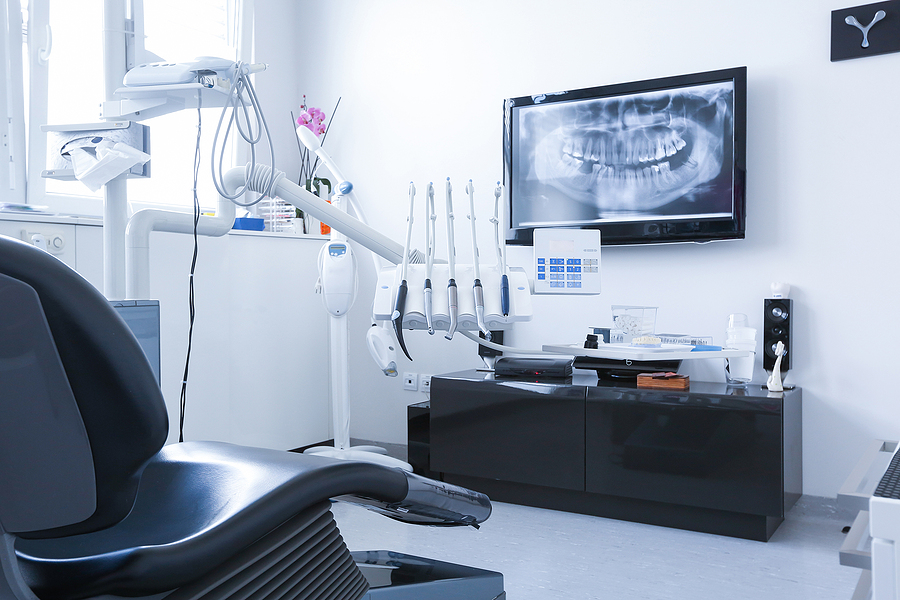WHAT ARE PERIODONTISTS AND WHAT CAN THEY DO FOR YOUR GUMS?
Posted by OC Advanced Periodontics on Nov 25 2019, 05:16 AM

Dentists who concentrate in the areas of the mouth specific to the gum, bone, and tissues that protect and support your teeth are called periodontists. Periodontists immerse themselves in an additional three or more years of in-depth, graduate studies after dental school. It allows them to graduate with knowledge of how to perform both cosmetic and restorative periodontal procedures. They can help patients recover from periodontal disease, both aesthetically and functionally.
Our periodontist is an expert in diagnosing and treating the diseases of these supportive tooth structures, along with periodontal medicine and the use of dental implants to replace lost teeth. When it comes to periodontal (gum) disease, we are talking about a group of diseases that end up with the same issues; losing vital gum tissue, connective tissues, and bone that support the teeth and protect them from gum infection.
Periodontal disease – or periodontitis – arises from dental plaque, which is a bacterial biofilm that accumulates around the teeth and gums and thrives if not removed daily with consistent oral hygiene care. Plaque causes the body’s immune system to react with an infection that destroys oral tissues. It is concerning, especially as we now see the connection between periodontal disease and other diseases in the body like diabetes and heart disease. With almost 50 percent of Americans struggling with periodontal disease, you can see why working with an expert dentist in the field of periodontics can impact both oral and general health.
Periodontal Treatments
– Root surface: Debridement; removing damaged oral tissue.
– Scaling and root planing: Cleans out the infected areas of a tooth’s root.
– Gum graft surgery: Covers exposed tooth roots.
– Regenerative procedures: Restores lost bone and tissue around a damaged tooth.
– Dental crown lengthening: Reduces a “gummy” smile.
– Dental Implant placement: Replaces a lost tooth with an artificial tooth root to anchor a replacement tooth or bridge.
– Pocket reduction: Reduces pocket depth and removes existing bacteria.
– Ridge augmentation: Fills in an indentation in the gums and jaw bone from a lost tooth.
When to See Our Periodontist
– Your bite feels “off,” and your teeth feel different when you bite, chew, speak, or brush them.
– You notice that your gums are swollen, red, or bleeding when you brush or floss.
– Your teeth feel loose or shift in the mouth.
– Your gums pull away from your teeth, forming pockets of bacteria and oral debris, and making the teeth look longer.
– You have pain in your gums around a tooth, or tooth sensitivity when consuming hot or cold foods and drinks.
– You have chronic halitosis (bad breath).
Do Not Delay
When it comes to periodontal disease, early detection and treatment are fundamental for the best possible outcome. Early treatment is minimally invasive, least painful, and least costly for keeping the gum tissue and teeth safe from further damage.
If you suspect you might have periodontal disease, we urge you to contact our office to schedule an appointment for a thorough evaluation and treatment. If you have problems with your gums, our skilled periodontal team can help prevent underlying bone from thinning as well as gum tissue from deteriorating further. We are ready to help your smile thrive!
Share On

The Impact of Dental Implants on Jawbone Health & Facial Structure
Dental health is often overlooked, yet it plays a crucial role in our overall well-being. One of the …

How LANAP Helps Save Teeth and Reverse Gum Disease
Gum disease is more common than you'd think, affecting millions of people across the globe. Many often overlook …

Advancements in Dental Technology: Transforming Oral Care
Dental technology has significantly evolved, improving dental treatments' efficiency, precision, and comfort. Whether digital imaging, laser dentistry, or …

The Benefits of Chao Pinhole® Gum Rejuvenation: A Faster, Less Painful Alternative
Are you tired of hiding your smile due to gum recession? If so, you're not alone. Many people …

How LANAP Laser Treatment Can Save Your Smile: The Science Behind It
Are you tired of dealing with the discomfort and embarrassment of gum disease? If so, you're not alone. …
